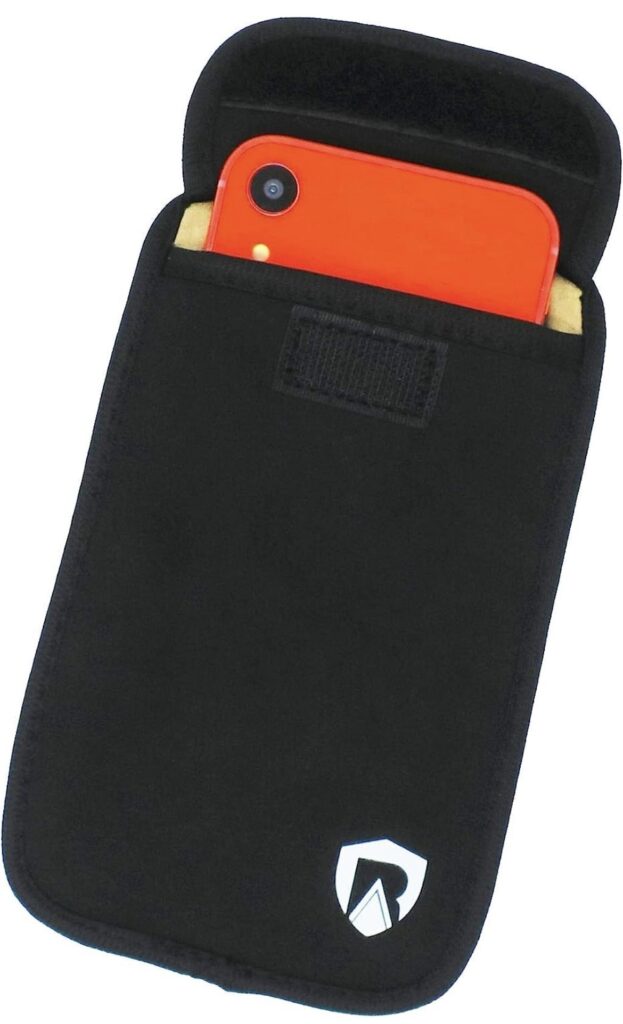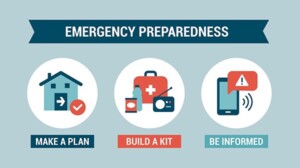In today’s fast-paced world, our smartphones have become more than just devices; they’re almost extensions of ourselves. These handy gadgets keep us connected, informed, and entertained, but at what cost? As an outdoor enthusiast and a tech-savvy individual, I’ve always been fascinated by the balance between staying connected and staying healthy. It’s time we address a concerning issue that’s often overlooked: smartphone radiation.

While we relish the convenience of instant communication, it’s crucial to consider the potential health risks associated with these devices we carry around all day. Let’s dive into the world of smartphone radiation, exploring what it is, how it affects us, and why, especially as lovers of the great outdoors, we might want to rethink our smartphone dependency. It’s not about fear-mongering; it’s about being informed and making choices that benefit our health and our planet.
Understanding Smartphone Radiation
The term ‘smartphone radiation’ might sound like something out of a sci-fi movie, but it’s a very real concern. Smartphones emit electromagnetic radiation, a type of non-ionizing radiation, when they communicate with cellular towers, connect to Wi-Fi, or use Bluetooth. This radiation, also known as radiofrequency radiation, is emitted whenever your phone is on, not just during calls.
There are two primary types of radiation emitted by smartphones: Extremely Low Frequency (ELF) radiation and Radio Frequency (RF) radiation. ELF radiation is emitted by a phone’s internal components, like its battery and processor, while RF radiation is used for wireless data transmission.
The question of how harmful this radiation might be to our health has been a topic of debate among scientists and health professionals. While the immediate effects might not be palpable, there’s growing concern about the potential long-term impacts of prolonged exposure, especially considering our increasing dependency on smartphones.
As outdoor enthusiasts, it’s important to be aware of these risks. When we’re out in nature, seeking a break from the digital world, we might unknowingly be exposing ourselves to these invisible waves. Understanding the nature of smartphone radiation is the first step in making more informed decisions about our tech habits, especially when enjoying the great outdoors.

Health Risks Associated with Prolonged Exposure
The health implications of prolonged exposure to smartphone radiation are a growing concern. Numerous studies have hinted at potential risks, ranging from minor ailments to more serious conditions. For instance, excessive smartphone use has been linked to headaches, sleep disturbances, and even a possible increase in the risk of certain types of cancers, although the research is still inconclusive and ongoing.
Particularly alarming is the impact on sleep quality. The blue light emitted by phone screens disrupts melatonin production, a hormone crucial for regulating sleep cycles. Additionally, the RF radiation, especially when phones are kept close to the body at night, might interfere with the quality of sleep.
In light of these concerns, many are turning to products designed to mitigate these risks. One such product is the RadiArmor EMF Blocking Cell Phone Sleeve. This EMF blocking pouch is designed to fit most cell phones and aims to reduce exposure to radiation by creating a barrier between the device and your body. The updated version, available in black and large size, is particularly popular among health-conscious smartphone users. It’s an innovative solution for those who want to stay connected but are wary of the potential health risks associated with prolonged smartphone use.
While products like the RadiArmor sleeve provide a practical way to reduce radiation exposure, they also highlight the need for more awareness and precautionary measures in our daily use of technology. As we become more reliant on smartphones, understanding the potential health risks and taking steps to minimize them becomes increasingly important.
The Survivalist Perspective: Minimizing Technology Dependence
Embracing a survivalist mindset means preparing for any situation and often involves minimizing dependence on modern technology, especially in outdoor environments. This approach not only enhances our survival skills but also reduces our exposure to smartphone radiation.
As a survivalist and outdoor enthusiast, I appreciate the need for a healthy balance. While smartphones offer GPS and emergency communication, over-reliance on these devices can be a double-edged sword, especially considering the radiation they emit. In nature, the art of navigation using traditional methods like maps, compasses, and natural landmarks can be both a rewarding skill and a way to reduce our tech footprint.
Incorporating non-digital methods into our outdoor adventures isn’t just about reducing radiation exposure; it’s about reconnecting with nature and honing our survival skills. For instance, learning to read topographic maps or navigate by the stars are invaluable skills that also offer a respite from constant digital connectivity.
Furthermore, taking regular breaks from technology, known as ‘digital detoxes,’ can significantly reduce our exposure to smartphone radiation. These breaks not only benefit our physical health but also enhance our mental well-being, allowing us to immerse ourselves fully in the natural beauty around us.
Adopting a survivalist perspective doesn’t mean abandoning technology entirely but rather using it wisely and mindfully. It’s about finding that equilibrium where we can enjoy the benefits of smartphones without compromising our health or survival skills.
Safer Smartphone Practices
Adopting safer smartphone practices is crucial in minimizing radiation exposure, especially when these devices are an integral part of our daily lives. Here are some practical tips for reducing your exposure to smartphone radiation:
- Use Speaker Mode or Earphones: Instead of placing your phone next to your ear during calls, use speaker mode or earphones. This simple step significantly reduces your head’s exposure to radiation.
- Limit Call Time: Try to keep your phone calls short or switch to texting. Text messages emit less radiation compared to voice calls.
- Avoid Body Contact: Carrying your phone in your pocket or under your pillow while sleeping increases your body’s exposure to radiation. Instead, store your phone in a bag or at a distance from your body.
- Text Rather Than Call: Texting emits less radiation than voice calls and keeps the phone away from your head.
- Use Radiation Shields: Products like radiation shields or cases can reduce the amount of radiation absorbed by your body. However, it’s important to research and select products that genuinely reduce radiation exposure effectively.
- Reduced Usage in Low Signal Areas: When your phone struggles to find a signal, it increases its radiation emission. Avoid using your phone in areas with poor reception, like elevators or remote outdoor locations.
- Turn Off When Not in Use: Switch off your phone or put it in airplane mode when it’s not needed, especially at night. This not only reduces radiation exposure but also conserves battery life.
By incorporating these habits into our daily routine, we can significantly reduce our exposure to smartphone radiation while still enjoying the benefits of these devices. Remember, it’s about making informed choices and finding a balance that works for you and your lifestyle.
Are There Viable Alternatives to Smartphones for Outdoor Enthusiasts?
For those of us who love the great outdoors, finding alternatives to smartphones that reduce radiation exposure while still providing essential functionalities is key. So, what options do we have that cater to our adventurous spirit without the constant buzz of technology? Let’s explore some smartphone alternatives that outdoor enthusiasts can embrace:
- Walkie-Talkies: These are excellent for short-range communication, especially in areas with no cell service. They’re a staple for many hikers and campers due to their reliability.
- GPS Devices: Dedicated GPS units are more accurate and reliable for navigation than smartphone GPS apps. They are designed to withstand outdoor elements and often have longer battery life.
- Paper Maps and Compasses: Old-school navigation tools don’t emit radiation and don’t rely on battery power. Learning to use them enhances your outdoor skills and connects you more deeply with the environment.
- Digital Cameras: For photography enthusiasts, using a digital camera instead of a smartphone camera can significantly reduce your tech exposure while capturing those stunning outdoor moments.
- Emergency Satellite Messengers: For safety in remote areas, devices like satellite messengers can be lifesavers. They allow for emergency communication without the need for cellular networks.
- Solar-Powered Chargers: These can be used to power other devices, reducing the need to use power-consuming apps on your smartphone.
By considering these alternatives, we can enjoy our outdoor adventures with less reliance on smartphones, thereby reducing our exposure to radiation and enhancing our connection with nature.
Making Informed Choices for Your Health
In the digital age, where smartphones are practically ubiquitous, making informed choices about their use is more important than ever, especially considering the potential health risks associated with prolonged exposure to radiation. Here’s how we can be more conscious about our smartphone usage for the sake of our health:
- Stay Informed: Keep abreast of the latest research on smartphone radiation and its health implications. Understanding the risks can help you make better decisions about your usage.
- Monitor Usage: Be mindful of how much time you spend on your phone. Apps that track usage can be helpful in setting limits and reducing unnecessary exposure.
- Healthier Habits: Incorporate habits that naturally reduce your exposure, such as using landlines when available, keeping the phone away from your body, and turning off the phone or using airplane mode when it’s not needed.
- Tech-Free Zones: Establish areas in your home, like the bedroom or dining area, as tech-free zones. This not only reduces radiation exposure but also improves quality time with family and enhances sleep quality.
- Digital Detoxes: Regularly schedule time away from your smartphone and other digital devices. Whether it’s for a few hours each day or a full weekend, these detoxes can significantly reduce your exposure and improve your mental well-being.
- Seek Alternatives: As discussed earlier, consider using alternatives to smartphones when possible, especially for tasks like navigation, photography, and emergency communication during outdoor activities.
- Health Precautions: If you have specific health concerns related to radiation, consult with healthcare professionals for personalized advice and precautions.
By making these informed choices, you can enjoy the benefits of technology while minimizing potential risks to your health. It’s about striking a balance that keeps you connected, healthy, and safe.
As an Amazon Associate we earn from qualifying purchases through some links in our articles.




